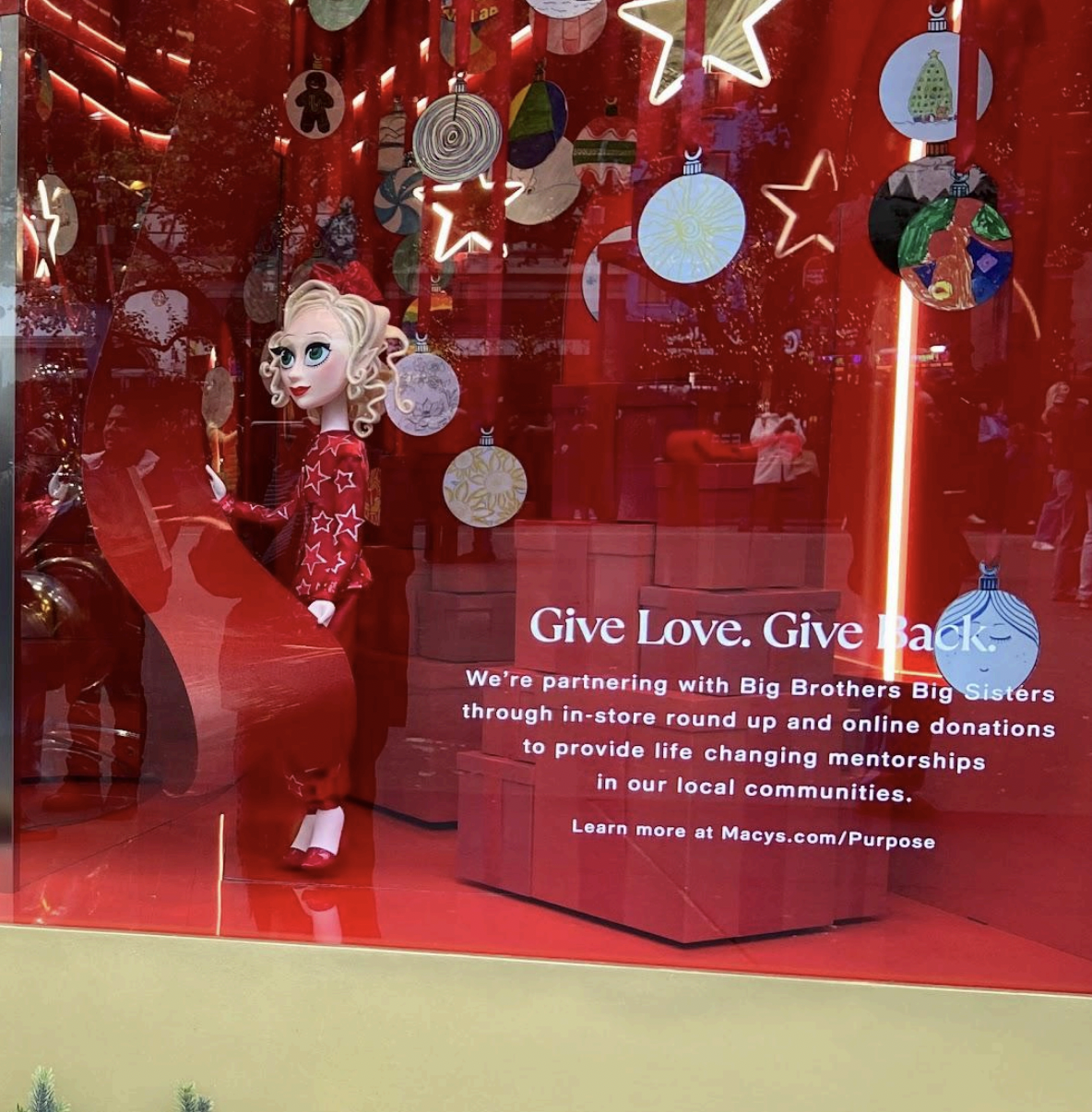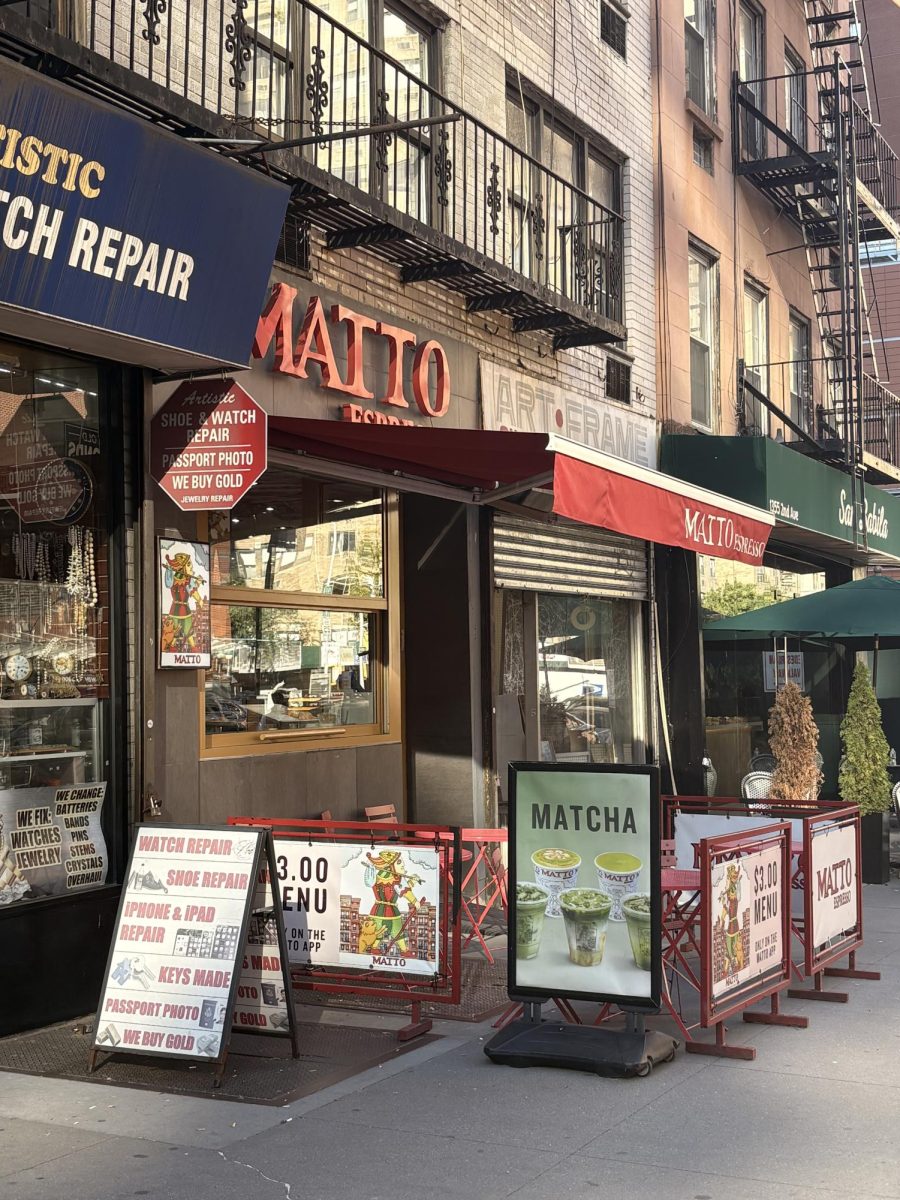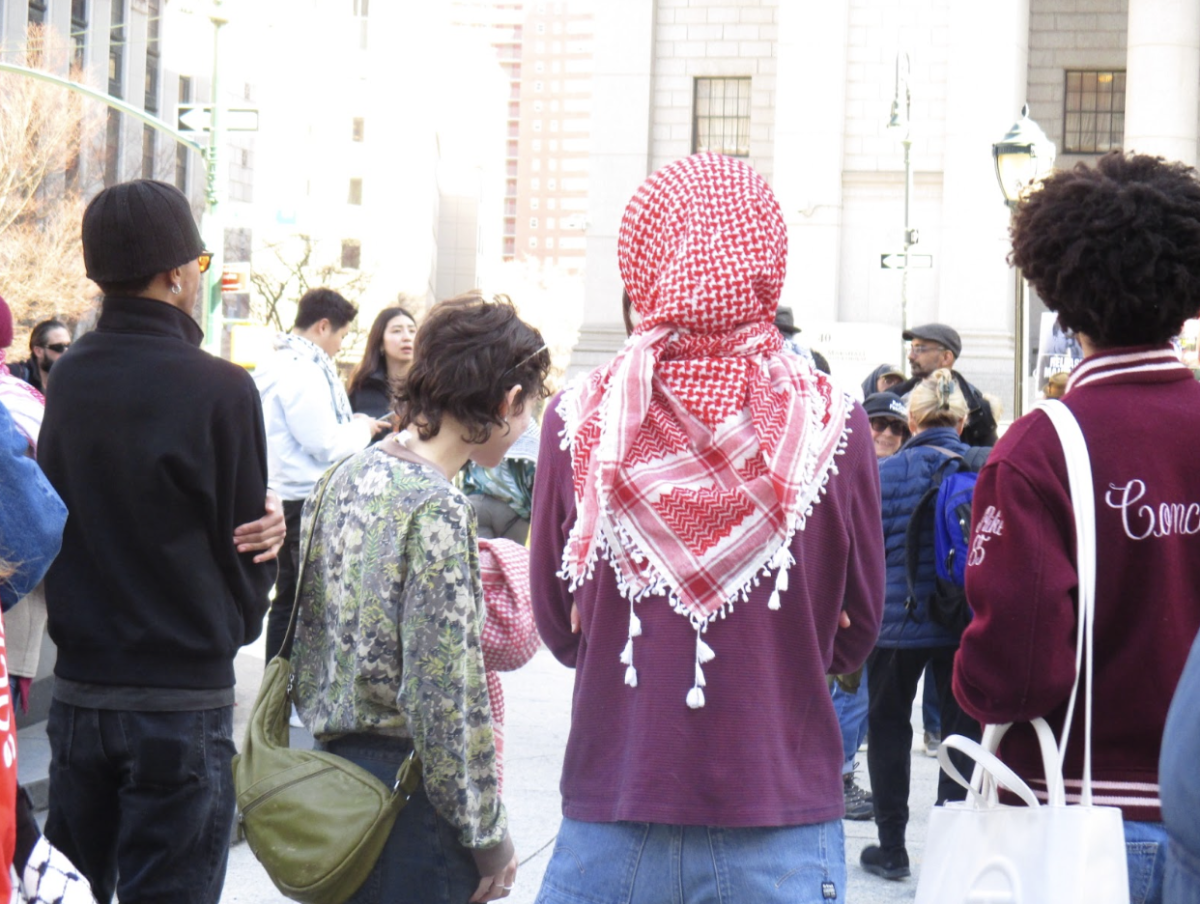“Mom, can we just go and see what’s in Toys R US but not buy anything?” a child asks his mother, the pair standing hand-in-hand, waiting to cross the street. Laughing, his mother replies: “That’s a good idea.” As the crosswalk light turns in our favor, the family and I cross together toward the giant red shopping bag that heralds Macy’s Herald Square. From top to bottom, green, red, silver, and gold bejewel the windows of the icon of New York City luxury. When the street lights turn red, folks from all over the world cross 34th Street to take a look at the incredible holiday display windows that hope to lure them in for patronage.


Games and interactive buttons encourage passersby to help Macy’s elves on their mission to deliver gifts to all children for the holidays. Interested individuals gather in makeshift huddles for their chance to press a button free of charge. At one window, two players are made to duel for the win. Adults and children alike approach, each trying to beat the other to three stars. Win or lose, the players drift o, hands empty of the store’s brown paper shopping bag.

Among the perusers, families from a broad array of incomes are navigating the foot trac. Mothers and fathers push strollers past a dark blue, sparkling Louis Vuitton display. One family comes to a stop in front of it, huddling close to the entrance doors and scooting in to t underneath the awning. In Spanish, they discuss the weather. It’s 38 degrees, and they can’t stay in the cold just to look at the windows any longer. They’ll try and warm up by the doors for a bit, and then head home. They do not discuss heading inside. They aren’t here to shop.

For lower income families, holiday season costs add to their already dicult nancial situations. According to the 2024 holiday consumer insight report from Circana, 62% of consumers are facing grocery costs that will impact their ability to participate in holiday spending. Moreover, more than 50% of shoppers plan to spend less due to other rising expenses. Families in the United States are experiencing increased holiday diculty. Among its lavish displays, Macy’s sends a message of sympathy.

Hiding on the corners of a few of these windows are small blurbs, telling of Macy’s partnership with Big Brothers Big Sisters, a non-prot mentorship program for disadvantaged children. For shoppers, this would mean a choice of rounding up to the nearest dollar as a donation. The move puts the donations in the hands of consumers, allowing Macy’s to put out a charitable display–while continuing to prot as normal.

This is of no concern to these renegade window shoppers. A mom and her two children approach the window and peer in at the distorted mirror behind the glass. The girls walk past the mirror one way, then back the other, searching for the point that will give them the most familiar reaction. After a while, their mother gathers them up and they cross the street away from the store.

button.

What the girls fail to realize, as they turn away, is that their reection was right in front of them. Featured in many of the windows is a model of a brightly dressed, pale blonde elf to represent the Macy’s workers during the holiday season. Occasionally, she is accompanied by another elf, this one dressed in a darker red and racially-ambiguous. The captions telling the story of these elves describe them as the Gift Guides. The Gift Guide windows, for reasons unknown, are unoccupied by viewers.

Families, instead, take turns for photos in front of the Barbie display. Barbies of all colors are stacked on an ornamented Christmas tree in this window. Another mom adjusts her daughter’s coat. The girl and her sister, in their matching winter attire, stand waiting for their mother to join their picture. With a broad grin, their father waits patiently to snap the shot. Other passersby sneak around to grab photos of the Barbie window. The holiday spirit is in the air, with nary a shopping bag in sight.





















